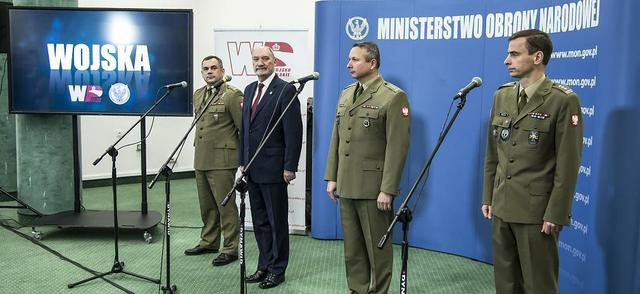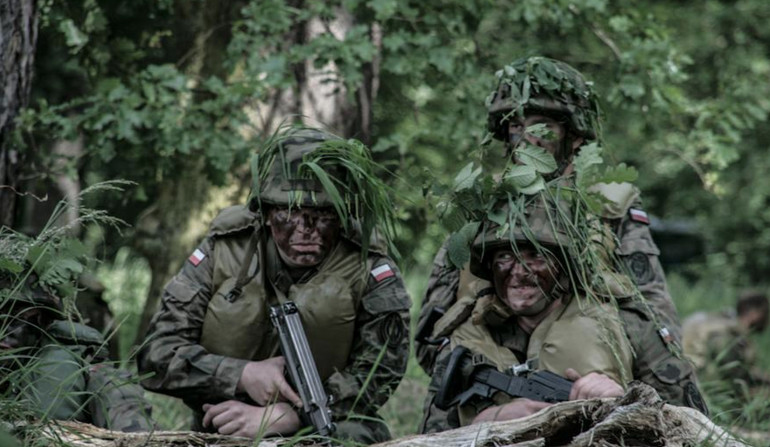Polish Militia
In
Login if you are already registered
(no votes) |
(0 votes) |
Research Fellow at the Primakov Institute of World Economy and International Relations under the Russian Academy of Sciences, RIAC expert
Poland is on the fast-track in creating an analogue to Russia’s National Guard—the Territorial Defense Force. Expecting the law to be formally approved, Poland’s Minister of Defense held a press-conference elucidating some of the details.
The Wojska Obrony Terytorialnej (WOT) were a prototype for the current Territorial Defense Force, which existed from 1965-2008 and was disbanded over the course of military reforms. They were supposed to protect the country’s borders, and carry out army reserve training and education. After the Ukrainian crisis and the aggravation of Russia-NATO relations, Poland’s government aimed at increasing the defensive power of the country and deterring an invasion from the East—them taking it seriously or not.

mon.gov.pl
This topic has become extremely urgent for the right-wing conservatives from Law and Justice who came into office in 2015 when Andrzej Duda won the presidential elections and the party won the majority of seats in both chambers of the Polish Parliament. The revival of the rebranded WOT seemed reasonable from a quality-price ratio, as the radical increase in the regular army would have cost too much both in terms of staff salaries, ammunition and equipment acquisition (though the numerical force of an army has grown this year by 5000 people). WOT is being preferably compared in the media to the US National Guard.
Poland’s Minister of Defense Antoni Macierewicz signed the document initiating the volunteer defense system on April 25. The amendments to the regulations are still in the Parliament, and there is no reason to believe that they will be rejected. As it is planned, the law will become effective on January 1, 2017. Macierewicz’s figure, noticeably odious even within Poland, and the overall internal situation became the reasons for certain speculations about the aims of WOT, which led to the release of a statement on the website of the Ministry of Defense saying that the units being raised will not be used against riots and will not become Minister’s «personal guard». Though it is unclear how they are going to counter the notorious «Russia’s hybrid invasion» if, according to the regional analysts, it starts with civil unrest (being instigated by the Kremlin, needless to say). Spreading rumors like that are akin to deliberate subversive activities.
The work is already virtually done—a nucleus of three brigades, 3,000-3,500 men strong, will be ready by the end of the year and located in the east of the country. Preliminary operation readiness will be achieved by March 17, 2017. It is stated that about 10,000 people are ready to be part of WOT, and together with that, the total number will exceed 18,000 by the end of 2017, and by 2019 it reach its goal of 53,000 people, which is close to the regular ground forces. The goal has increased dramatically as even during the summer the plans called for the force to consist of 35,000 part-time volunteers. WOT will be considered an independent armed service and, according to the Minister, it will be financed without prejudice to the modernization of the regular Polish army.
However, the expenses are not likely to be prohibitive, and are estimated to be about 3.6 bln zloty (about USD870 mln) till 2019. WOT will be equipped as light infantry, obviously, with a low level of motorization and without modern military hardware at any rate. It is stated that almost all the equipment will be made in Poland and will be new, but on a practical level, WOT will probably receive secondhand equipment from the regular army.

defence24.com
Territorial Military Service will be an active military service filled on a rotational basis (a minimum of one weekend a month) and requiring full availability. Soldiers called up for duty for the first time will be directed to basic training lasting 16 days, after which a military oath is taken. They lead their regular life, practicing on a periodic basis. One of the key requirements is to be ready for mobilization 24/7, which is natural, as the whole essence of the territorial forces is to create an active well-trained (compared to common civil reservists) reserve. It is possible that as in countries like Switzerland, a reservist will have to keep not only his/her equipage, but also an individual weapon, at home. Being in the «full availability» status will offer a monthly payment, as well as some bonus payments for military exercises. After three years of service, a reservist will receive priority in case of applying for the Polish contract-based professional army. In real terms this might be an automatic compliance with the request, let alone the outreach activities to initiate such applications, as a good reservist with basic training is a great resource for the regular army.
With all the attitude and propaganda about «Russia’s threat», the Territorial Military Service will be popular among ideologically sensitive citizens—such organizations are not a matter for serious career or earning money. There are many paramilitary organizations in Poland and it as if the government is trying to consolidate them under its own direction by creating WOT. If you can’t (or don’t want to) beat em, join em. Generally, the military environment in the region has not changed much, in spite of the fact that the number of ground Polish military components is being almost doubled, as the reserve is not likely to provide the efficiency of the professional army. Though policy-wise, this means that more loud statements on the readiness to suppress «Russian threat» and more military exercises practicing urgent mobilization with well-known scenarios and relevant media coverage may be made.
(no votes) |
(0 votes) |




